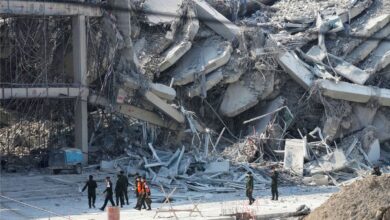Ryan International School murder case: Child safety is non-negotiable and must feature in amended RTE Act

When it comes to vulnerable populations, children being one of them, we as a nation prefer to wait until something horrific happens until we take action, be it death due to lack of oxygen in a hospital, or sexual assault and murder inside school premises.
The sexual assault and murder of a young boy at Ryan International School, Gurugram, and alleged rape of a young girl at Tagore Public School, Delhi, has thrown light on the appalling state of child safety in India, but what is equally unfortunate is that the incidents will soon recede from public memory, and children across the country will continue to be unsafe.
The point that needs to be driven home is that this is not a stray incident, that Ryan International is not a unique defaulter, that status quo will ensure that grotesque crimes like these are likely to repeat themselves and we don’t know when or where, unless something changes now. At a time like this, we need to persist and ask — what are the preventive measures in place for child safety in schools, to what extent are they followed, who is accountable for lapses, and what needs to be done to fix the flaws in the system?
Lack of preventive measures in law
If we look at the law, the Right to Education Act (RTE) prescribes recognition norms for schools. However, by way of safety, the only conditions schools are required to follow is ‘arrangements for securing the school building by boundary wall or fencing’ and providing separate toilets for girls and boys. It is another matter that there are likely to be a large number of schools which don’t meet even these basic standards.
The RTE Rules in each state may instate further conditions, but most states don’t have specific measures relating to child safety. For instance, the Haryana RTE Rules which are applicable to Ryan International, enable the state government to require schools to furnish compliance reports, but don’t elaborate on the nature of compliances. States also have their own Education Acts which impose additional conditions on schools, but these are likely to be in the nature of furnishing building and fire safety certificates at the time of applying for recognition.
The POCSO Act criminalises sexual abuse of children and lays down punishments for offenders. It also, incidentally, prohibits media reports from disclosing the identity of the victim – a provision which is being flouted with abandon in this case. However, while the law provides forums for registering complaints and consequences for violations, there simply aren’t adequate preventive measures for ensuring child safety.
What would such measures look like? There are several protocols we may refer to. At the Central level, the National Commission for Protection of Child Rights (NCPCR) has published guidelines for regulating private play schools which include detailed conditions for toilet facilities, CCTV surveillance, and affidavits from office bearers of the school stating that they have never been convicted under any child rights legislation. These guidelines are in line with the National Early Childhood Care and Education (ECCE) Policy, 2013 – another comprehensive policy which addresses child safety within schools.
There is a Model Education Code prepared by the National University for Educational Planning and Administration in 2015, which prohibits construction work in schools during working hours and requires all rooms of the school, including toilets, to be checked before the building is locked, among other things. IN 2014, the MHRD itself had notified a set of guidelines in pursuit of child safety and well-being in schools. These include training for children and teachers for dealing with specific hazards on their way to school, and strict background checks for drivers and other staff.
Karnataka notified a Model Child Safety Policy last year, following a spate of incidents where children were molested or otherwise harmed in Bangalore schools. The policy lists tasks for each department of the State government dealing with children or schools, as well as a coordination mechanism. It requires schools to set up child protection committees of their own and create a customised child safety protocol. It also recommends supporting measures such as helplines, child complaint boxes and thorough background checks for recruiting teachers and other staff.
The trouble with all these policies is that they are unenforceable – there is no legal obligation for school managements or government officials to abide by them.
Points of action
Both the central and state governments must consider notifying in law a set of non-negotiable child safety conditions for schools. These can be added as amendments to the RTE, or states can create customised norms in line with Central guidelines and accordingly modify their RTE Rules or State acts. These conditions must be applicable to all schools — government, private, minority, non-minority. There is a critical regulatory objective that the state needs to adopt here — a school which is incapable or unwilling to guarantee child safety should simply not be allowed to function.
A crucial step in ensuring child safety is regular monitoring – an area where the state continues to fail. This is where parents need to step in. School Management Committees in government schools and PTAs in private schools are in a good position to regularly demand information and compliance from school managements. They need to question — does the school have a safety protocol in place? Are the backgrounds of teachers and all persons who come in contact with the child verified? Are they trained in dealing with children who are under stress or trauma?
Another important point of action is for the state to stop flinching at the prospect of sex education in schools and institute a comprehensive curriculum which informs children of their rights and educates them about healthy and appropriate sexual behaviour. There is much talk about the evils of social media, but the fact is that children cannot be locked away from exposure to information on the internet. The onus should be on caregivers to direct them to the right information.
There is a lot that can be done to prevent further incidence of child abuse in schools, if all stakeholders act now. The key is to focus on sustained prevention everywhere, rather than wait for specific cases to blow up.







